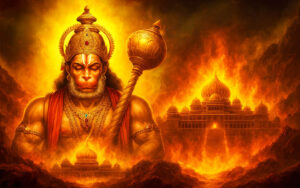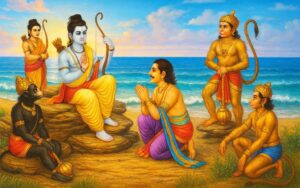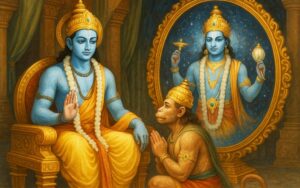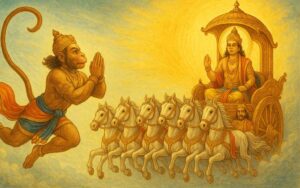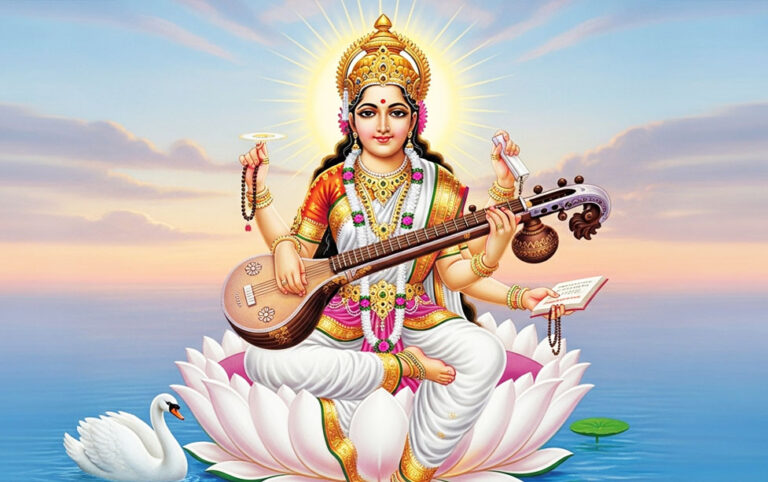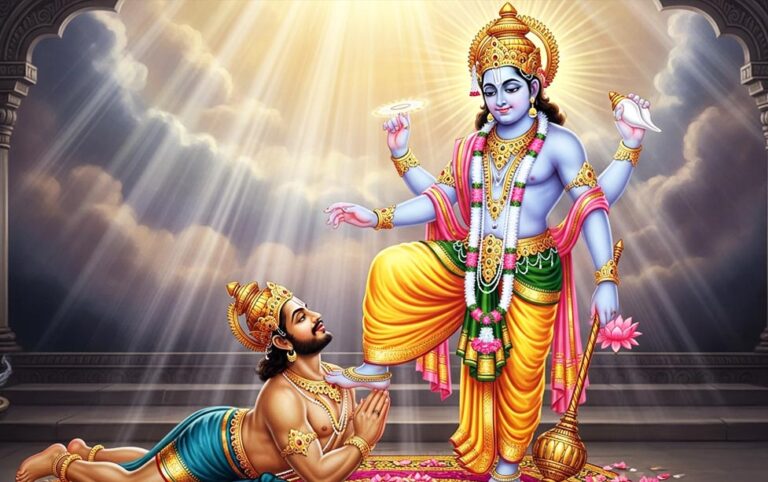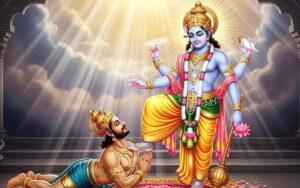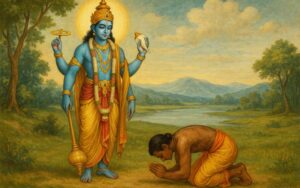
No time for reading the story? Give it a listen on Spotify.

Within the pages of Valmiki's Ramayana, the tale of rakshasa brothers, Vatapi and Ilvala, unfolds—a story of deception, divine intervention, and the birth of an ancient Shiva temple in southern India.

Characters in the story:
Vatapi and Ilvala: Vatapi and Ilvala are two demon brothers in the Ramayana. They are known for their cunning scheme of inviting travelers for a meal, with Ilvala transforming into food, and then Vatapi reappearing after digestion, tearing open the victim’s stomach.
![]()
Rishi Agastya: Rishi Agastya is a revered sage in Hindu scriptures known for his immense knowledge and wisdom. He is considered to be one of the Saptarishis (seven great sages) and is associated with the Rigveda and various other texts.
According to Valmiki’s Ramayana, there once lived two rakshasa brothers, Vatapi and Ilvala. These malevolent beings had spent their lives deceiving and slaying holy men. Vatapi possessed a unique boon, allowing him to assume any form he desired, while Ilvala had the power to revive the deceased.
To execute their nefarious plan, the brothers would take on deceptive disguises. Ilvala transformed into a saintly figure, while Vatapi would morph into a harmless goat. Whenever sages ventured into their forest abode, Ilvala would extend a gracious invitation to feast with him. Unknowingly, these sages would consume the cooked meat of Vatapi, the disguised goat.
Once the meal was finished, Ilvala would call out for Vatapi to emerge from within the sages’ bodies, tearing them apart and causing their demise. This cunning ploy led to the deaths of countless holy men.
One fateful day, Sage Agastya passed through their territory, and as expected, Ilvala invited him for a feast. However, Agastya, blessed with divine insight, discerned the wicked intentions of the rakshasa brothers.
Despite being aware of the danger, Agastya decided to play along. As the meal was served, and Vatapi’s meat was consumed, Sage Agastya calmly placed his hand on his belly and uttered, “Vatapi, get digested.”
To Ilvala’s dismay, this time Vatapi did not return when called upon. Sage Agastya had used his mystical powers to prevent the resurrection of the deceitful rakshasa. Agastya explained that Vatapi’s soul had departed, and he could never return.
Enraged by the loss of his brother and seeking revenge, Ilvala attempted to attack Agastya. However, the sage, fortified by the spiritual potency derived from his penance, unleashed a torrent of fire from his eyes, reducing the rakshasa to ashes.
The legends narrate that this momentous event unfolded at a place called Konnur, now known as Villivakkam, in Chennai, Tamil Nadu, the southernmost state of India. In honor of the divine intervention that took place there, Sage Agastya erected a grand Shiva temple and dedicated himself to intense penance.
Over the years, Shiva was pleased by Agastya’s devotion and appeared before him, absolving the sage of all his sins. The temple stands as a venerable symbol of this ancient tale and is believed to be one of the oldest Shiva temples in existence.
In the end, the valor of Sage Agastya prevailed, vanquishing the wicked rakshasa brothers and establishing a sacred legacy that endures through the ages. The grand Shiva temple in Villivakkam stands as a testament to the triumph of righteousness over malevolence, inspiring reverence and devotion in all who visit.


